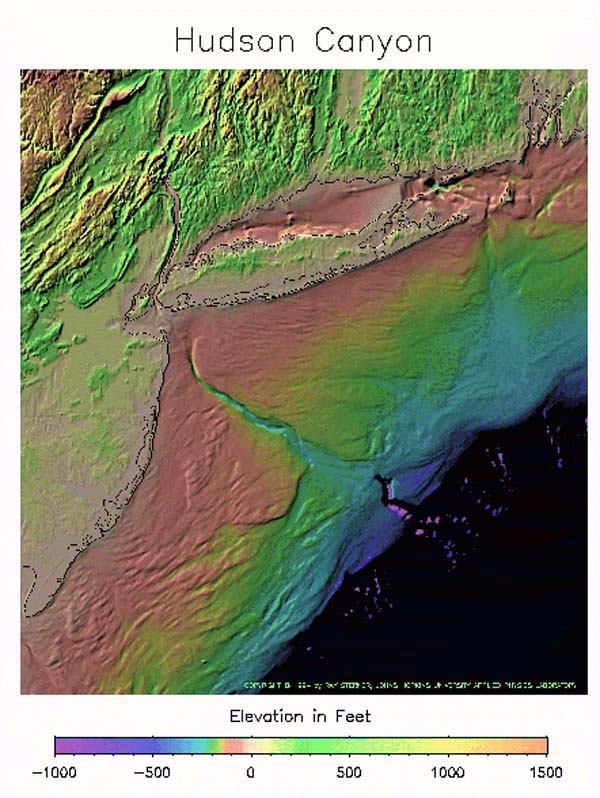April 14, 2017 — On Wednesday, the Mid-Atlantic Fishery Management Council voted 15-4 in opposition to a proposal by the Wildlife Conservation Society (WCS) to name the offshore Hudson Canyon a National Marine Sanctuary. The proposal was widely opposed by both commercial and recreational fishermen.
“The proponents of the sanctuary nomination will eventually claim that commercial fishing in the sanctuary is a threat,” said Garden State Seafood Association executive director Greg DiDomenico, who testified in-person at the MAFMC meeting. “They will use the authority under the Sanctuaries Act to address those threats and restrict commercial fishing. In addition, they want to conduct science, and educate and organize a constituent base, all things that they can accomplish without making the Hudson Canyon a sanctuary. It’s that constituent base that they will use later to harm the commercial fishing industry.”
The American Bluefin Tuna Association (ABTA) praised the MAFMC’s decision to oppose the sanctuary nomination. In a press release today, ABTA wrote, “Notwithstanding statements made by the WCS at the meeting that sanctuary status would not affect fishing in the area, great concern was expressed by the Council for the fact that the Marine Sanctuary Act provides for a sanctuary to have ultimate statutory authority over fishing […] The MAFMC should be applauded for a bold decision taken at the appropriate time.”
The following is excerpted from an article published yesterday by The Fisherman:
In their official nomination, the Wildlife Conservation Society (WCS) and their Coney Island Aquarium staff outlined their specific reasons for nominating the offshore Hudson Canyon as a National Marine Sanctuary.
“Many people, whether they are ocean enthusiasts or have never set foot in salt water, will never make it out to the Hudson Canyon itself because of its distance offshore and accessibility being restricted to a half-day boat trip,” the letter says, adding “WCS has the unique opportunity to bring the wonder of the deep sea directly to millions of visitors each year through interactive exhibits within our parks.”
For thousands of coastal fishermen who don’t mind the “half-day boat trip” to the Hudson to tangle with mahi, tuna and billfish, there was good news on April 12 when the Mid-Atlantic Fishery Management Council (Council) voted 15-4 in opposition to the WCS pitch to designate the Hudson Canyon as a restricted area of the ocean.
While claiming to have “community-based support for the nomination expressed by a broad range of interests,” the WCS marine sanctuary plan had actual fishermen and fishing industry leaders incensed.
In a letter of opposition on behalf of coastal fishermen, Recreational Fishing Alliance (RFA) executive director Jim Donofrio noted that regardless of the WCS’s intention, recreational fishermen would not have any legal protection under the federal sanctuary law.
Read the full story at The Fisherman

